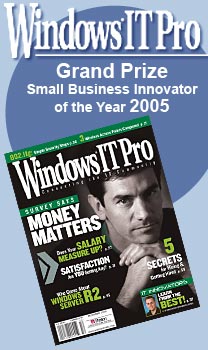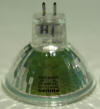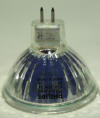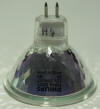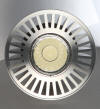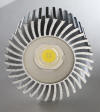 |
|||||||||||||||||||||||||||||||||||||||||||||||||||||||||||||||||||||||||||||||||||||||||||||||||||||||||||||||||||||||||||||||||||||||||||||||||||||||||||||||||||||||||||||||||||||||||||||||||||||||||||||||||||||||||||||||||||||||||||||||||||||||||||||||||||||||||||||||||||||||||||||||||||||||||||||||||||||||||||||||||||||||||||||||||||||||||||||||||||||||||||||||||||||||||||||||||||||||||||||||||||||||||||||||||||||||||||||||||||||||||||||||||||||||||||||||||||||||||||||||||||||||||||||||||||||||||||||||||||||||||||||
  |
    |
||||||||||||||||||||||||||||||||||||||||||||||||||||||||||||||||||||||||||||||||||||||||||||||||||||||||||||||||||||||||||||||||||||||||||||||||||||||||||||||||||||||||||||||||||||||||||||||||||||||||||||||||||||||||||||||||||||||||||||||||||||||||||||||||||||||||||||||||||||||||||||||||||||||||||||||||||||||||||||||||||||||||||||||||||||||||||||||||||||||||||||||||||||||||||||||||||||||||||||||||||||||||||||||||||||||||||||||||||||||||||||||||||||||||||||||||||||||||||||||||||||||||||||||||||||||||||||||||||||||||||||
|
|||||||||||||||||||||||||||||||||||||||||||||||||||||||||||||||||||||||||||||||||||||||||||||||||||||||||||||||||||||||||||||||||||||||||||||||||||||||||||||||||||||||||||||||||||||||||||||||||||||||||||||||||||||||||||||||||||||||||||||||||||||||||||||||||||||||||||||||||||||||||||||||||||||||||||||||||||||||||||||||||||||||||||||||||||||||||||||||||||||||||||||||||||||||||||||||||||||||||||||||||||||||||||||||||||||||||||||||||||||||||||||||||||||||||||||||||||||||||||||||||||||||||||||||||||||||||||||||||||||||||||||
|
So what is the solution? |
|||||||||||||||||||||||||||||||||||||||||||||||||||||||||||||||||||||||||||||||||||||||||||||||||||||||||||||||||||||||||||||||||||||||||||||||||||||||||||||||||||||||||||||||||||||||||||||||||||||||||||||||||||||||||||||||||||||||||||||||||||||||||||||||||||||||||||||||||||||||||||||||||||||||||||||||||||||||||||||||||||||||||||||||||||||||||||||||||||||||||||||||||||||||||||||||||||||||||||||||||||||||||||||||||||||||||||||||||||||||||||||||||||||||||||||||||||||||||||||||||||||||||||||||||||||||||||||||||||||||||||||
|
I went searching for LED type lamps that would provide adequate brightness, and found the entire industry severely lacking when it came to specifications. If you don't believe me, try for yourself - try and find an LED bulb with equivalent brightness to a 20W 12V MR16 halogen bulb. I did a Google search for LED MR16 lighting and this particular page came up. I'll summarize if you don't want to read it. In the technical specifications, it says "Max Light Output LED LAMP: Warm white, 400 Lumen, White 500 Lumen. Light Output LED Light Bulb: Warm White, 267 Lumen (comparable a 35-40 watt halogen light bulb), White: 334 Lumen (comparable a 45-50 watt halogen light bulb" This company is in California - the specification doublespeak gets MUCH WORSE if you go direct to LED bulb vendors in Taiwan or China. Can you tell what this warm white bulb's brightness is in lumens? 400 or 267? That is quite a gap. Is cool white's brightness 500 or 334 lumens? Or are they saying that if you drive the voltage high enough, you can get a very bright light ... for a few minutes... followed by smoke? Plus, at $40, this is one expensive bulb. Perhaps I can get the same or better lighting from 2 x $10 bulbs? Lets establish some baseline measurements: How bright is a 35-40 or 45-50 halogen bulb? And is this really as bright as those kinds of bulbs? Here is a table for some common bulbs and their brightness. [1]
480 lumens is brighter than the "Warm white" bulb from the ad above ("400 or 267"). If the cool white's higher spec number is to be believed, it is barely above their figure. So I'm inclined to think their numbers are bull. Now it might still be bright enough for my application - but you can't tell from the specification. The important thing to remember is a 40W bulb consumes 40W of electrical power, wastes 90% of that energy as heat, and says nothing about how much light it produces. Ditto a 100W bulb. You really need to look at the lumens output, which is typically measured at a fixed distance over a fixed area. Unfortunately, most of the non-engineering world thinks 40W is a light output specification. Back to our misleading ad: It also says "Beam angle: 35-45 degrees with diffused lens light spread to 180 degrees" - So which is it? Do you get a cone 35-45 degrees of wider than spot light, or do you get a 180 degree flood light? And what is the light intensity at 180 vs the light at 90? If you haven't read enough misleading ads yet, here is another one. Summary: "...3 Watt High Power LED giving you Super Light Output 70 lumens... Our new 5W MR16 actually gives you 2x more light then our 3W, near 50W normal light bulb..." later in the ad they say their 5W bulb produces 195 lumens. 70 lumens is less than half a 20W halogen. 2x that is 140 lumens, which they claim is near a 50W normal light bulb. They say math is hard, but I think there are some bad figures being thrown around. Ok, last bits on bulb brightness before moving on. Here is an interesting article from ElectronicsWeekly.com talking about "...the first LED to achieve more than 1000 lumen[s], brighter than a 50W halogen lamp" That correlates with the Philips datasheet saying their 50W halogen MR16 flood puts out 850 lumens. Let the buyer beware! There are lots of claims of strongest brightest LED lamps in MR16 and MR11 formats all over the place! Directionality of the light As a kid, ever take a magnifying glass and use it to burn ants by concentrating the sunlight? In other words, you can make more light by directing light from one source to a smaller or different area. Our standard incandescent 40W bulb produces even light in a spherical pattern less the "towards the base" direction. If instead I focus that light to half of the sphere, I can get more photons & measured lumens out in that direction. Think of a flashlight bulb bare VS. put into a reflector that pushes all the light in one direction. That is exactly what happens with small MR11 / MR16 bulbs - the light is focused into various patterns (spot / flood) so more light is directed. This lets more of the light go where you might want it to go VS. go everywhere at once. Some vendors don't give a lumens specification for their bulbs because of this directionality. Instead, they rate their bulbs brightness in CBCP, or "Center Beam Candlepower" - how bright is the bulb at the brightest part of the beam. So what does all this mean? It means unless you can find accurate lumens specifications for your LED bulbs, you will have a hard time figuring out what you need or even if you'll be satisfied with LED bulbs as your lighting solution until after you've bought it. As a consumer, all this engineering / scientific stuff aside, we just want to know how bright is the bulb and as a reference we know how bright the reading lamp next to us is with a particular wattage bulb is inside. Which is why I'm doing this - I want that solution, so I'm going to solve this problem by answering the following: For a whole pile of LED based low voltage bulbs currently on the market, how bright are they when compared with standard incandescent / halogen lights? What are their costs, where can you get them, and how do they compare with what you are used to - the standard light bulb? In November of 2009 I ordered a couple of LED bulbs off various vendors on eBay. In December I ordered a bunch more. As more arrive and are measured, they'll be added to the review. But there comes a time when you have to shoot the engineer and ship the product. Meet the contestants! Our first round of testing holds the first 4 MR16 Halogen bulbs from Philips as the standards to which all other LED bulbs will be compared against. I picked Philips because I found them at Home Depot first and found their spec sheets online from my iPhone and no other reason. From left to right are H1 to H4 as described in the table below. All the photo thumbnails can be clicked for a higher resolution version of each photo.
Onto the reviews! General observations: I'm breaking them down into groups - it isn't fair comparing a spotlight to a floodlight's brightness. I have chosen < 20° for a beam width of spot, 21-44° is medium, and > 44° as a flood light. Measurements were taken to 50% and 25% of peak brightness - the 50% brightness distance and the angle calculated from it classified each as flood, medium, or spot. DO NOT READ THE ONE-LINE DESCRIPTION TO DETERMINE THE BEAM WIDTH! Vendors throw in terms light "Brightest" "Spot" Wide" "White" in order to get their bulbs viewed. During the tests, I found it interesting that the same technology can produce vastly different results with the smallest of modifications. Here are LED1 and LED3 - a spot and a flood - whose main difference is the distance between the LED element itself and the top of the lens.  And the associated beam pattern - spread out wider (flood) or longer and thinner (spot) on the bottom. Curiously, the spot had "wings" of glare spreading out each side at angles wider than the flood pattern.  Here are all the contestants, gathered together for some group shots. First an overhead shot: 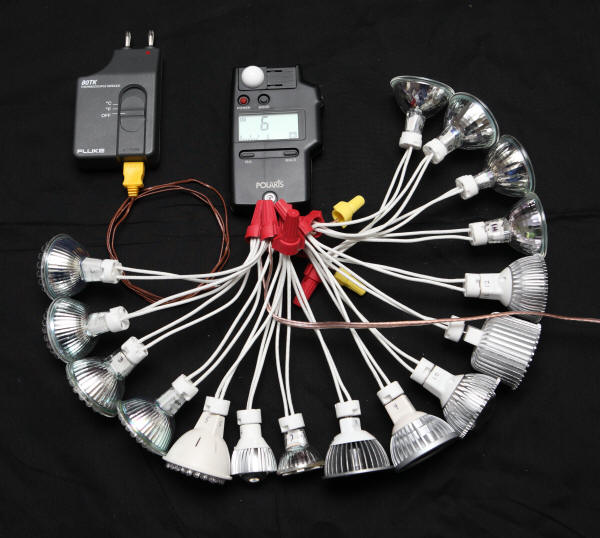 Again, detailed view if you click on any photo. LED1 is at 9:00, and they go counter-clockwise, At 1:00 is Halogen #4, followed by 3, 2 and 1 going clockwise. At the top is the light meter, and on the top left is the Fluke 80TK with the thermocouple attached used for temperature measurements. The following are some facial pseudo-close-ups useful if you are curious how two bulbs compare to each other size wise.  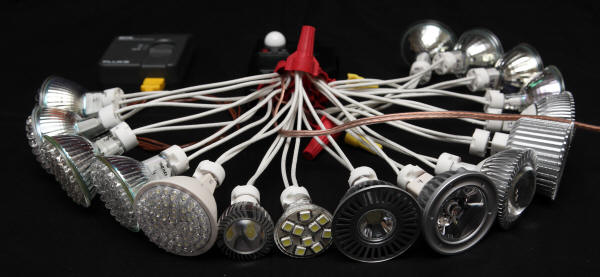 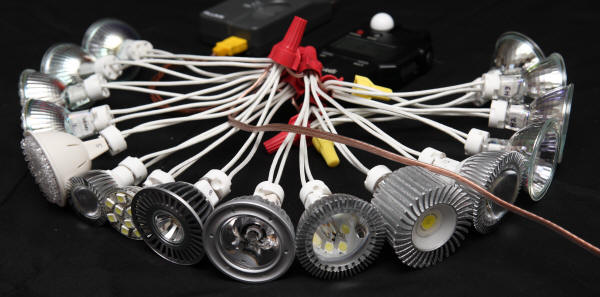 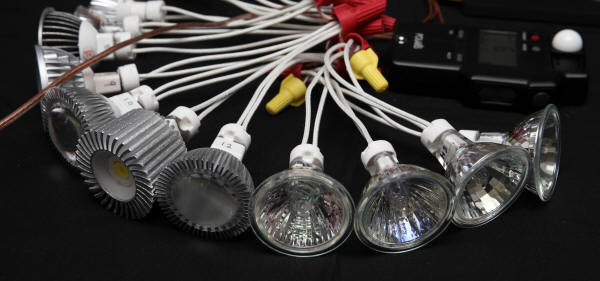 Here I illuminated, just the LEDs. #1 is at 4:00, and they are in order counter-clockwise. You might think you are seeing a wide variety in color temperatures.... however.... 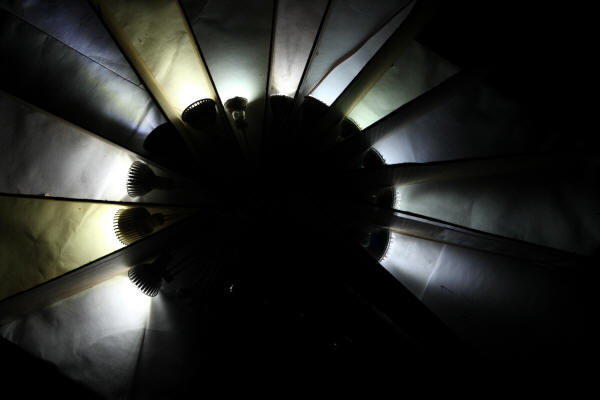 When I added in the halogens, you can see how radically different the colors of all the bulbs are VS the halogens.  Note: I did not do any color balancing or correction on either of the above two photos, so take the lights as relative colors not absolute. I also had to under expose the LEDs as the halogens blew the exposure on them out of the water. A few other general observations before getting to the details: 1) NONE of the LEDs come close to the brightness of the halogen bulbs for their coverage area. The first two LED spotlights, LED1 and LED9, at their brightest point were comparable to the brightness of the 20W halogen flood. Being spotlights, they didn't cover nearly the area the halogen flood did. 2) I did not deliberately order any bulbs that emitted a warm color light - I was looking for a more pure white / cool white color balance and as bright as I could get, and the whiter lights were brighter than the warmer lights. 3) The hottest LED runs cooler than the coolest Halogen. By at least 50°F Spotlights: Here are the players: H4 Philips Indoor Spot 50W Halogen LED1 Pure White MR16 38 LED Bulb Light Lamp Spotlight 12V LED9 New 3W MR16 GU5.3 LED Bulb Spot Light Cool White DC 12V Raw stats:
Here is the secret decoder ring for the columns: Light# - My label for the light Cost - Delivered cost per unit in $US in December 2009, including shipping and handling from the vendor Tech - Technology for generating light LEDQty - For LEDs, how many LEDs are in the bulb. For Compact Florescent, how many coils Type - Where I can identify the type of LED, it is here. Pol - Does polarity (+/-) of the DC source matter? Yes/No The next 4 columns are from whatever specifications I could find from the vendor. Lifetime - Quoted lifetime Watts - Quoted power consumption Brightness - Quoted brightness Beam width - Quoted beam width 50% angle - The angle I calculated where the brightness dropped to 50% of the maximum brightness at 1 Meter distance 25% angle - The angle I calculated where the brightness dropped to 25% of the maximum brightness at 1 Meter distance 1M EV - The peak brightness as measured by the exposure meter in EV 1M Calc Lumens - Some math converts the EV into Lumens. I don't know how accurate this is. 0M EV - The brightness as measured right at the surface of the bulb. Temp (Degrees F) - How hot does the bulb get? Current (A) - How much current does the bulb consume @ 12.1 VDC? Wattage (W) - How many watts of power does the bulb consume? Color Temp - Taking raw RGB values for light reflected off white surface and converting that to the light's temperature. Notes - Things I wanted to talk about LED1: At $5/each delivered cost, if you want a spotlight to highlight a small area, this is a bargain. Standard LEDs with a tall lens, this was my choice for a value spotlight. LED9: Brighter than LED1 with a similar angle, it exhibited a curious yellowish patch to one side as seen in the photo I used for color temperature reading:  Between running hotter ( 136F) and costing $11.78/ea, I'd rather put two LED1s on a spot instead of one LED9, and I won't have to worry about the yellow spot. I don't know what the technology is, but it has one big LED in the center with a reflector around it. If the yellow spot doesn't bother you and you are limited by the number of sockets, this is a good choice. Runs hot enough you won't want to handle it for more than 10 seconds without a glove. H4: A 50W Halogen spotlight. Everything you expect - bright and warm yellow light and power hungry and HOT HOT HOT. Hot enough to cook an egg on the surface. If you cut your finger off and are squirting blood everywhere, you can cauterize the wound with one of these bulbs. They spec a CBCP (center beam candlepower) since it is a pretty narrow beam of light VS a 'lumens output' in their spec sheet. $6.47 at my local Home Depot. Medium angle lights: H2 Philips Indoor Flood 35W Halogen LED2 MR16 48 LEDs 12V Wide Angle White Spot Light Bulb Lamp LED8 120° Cool White HI-POWER MR16 LED 12V 5W 280lm
LED2: Poor quality control from the vendor, this bulb had 3 LEDs dark. But given there are 48 of them, that means my readings are 45/48 = 94% of their true values. Close enough I didn't scale the numbers at all. An unremarkable bulb in the lower end of the cost spectrum, their spec sheet reads similar to other vendors from the orient. "Wide Angle Spot Light" ? Get a clue. I didn't even bother complaining about the dark LEDs. LED8: I don't know who measured their beam width, but their description is wrong. In fact, I think this LED bulb given a lens that focuses the beam tighter and more like the 20W Halogen Flood would probably beat the Halogen for brightness. Focusing to 18 degrees, it might even give the 50W halogen spotlight some serious competition for a fraction of the power. Their specification sheet nailed the operating temperature exactly, which makes me believe their other numbers. Their specs call for a DC voltage in the 13-22 range, and I'm tempted to push it higher to see if it gets brighter. Maybe if I do a round #2. This would be my choice for a medium angle light. Floodlights: H1 Philips Indoor Flood 20W Halogen H3 Philips Indoor Flood 50W Halogen LED3 2x 36 LED MR16 White Wide Angle Spot Light Bulb 12V New LED4 2 MR16 48 LED 12V Wide Angle White Spot Light Lamp Bulb LED5 2 x 72 LED 12V MR16 Light Bulb WIDE ANGLE - white LED6 Brightest SMD MR11 150 Lumen White LED Light Bulb 12 V LED7 Brightest MR11 12 V 10 SMD LED White 160 Lumen Wide Ang LED10 MR16 15 LED Cool White 300 Lumen Vaulted Lens 12V AC DC LED11 MR16 Nichia CREE LED WHITE/WARM 325LM 12V FLOOD LED12 Brightest SMD MR16 380 Lumen Bright White LED = 35 Watt
LED3: Unremarkable bulb. Very dim. Possibly useful as an always-on nightlight. At the bulb surface, as bright as some others, but it spreads that light so thin (63 degrees to 50%, I couldn't measure 25% as it was too dim for my light meter @ 1M distance) that it is hardly worth mentioning. Claims it is wide angle spot light - it is very wide angle, nothing spot about it. Only bulb where polarity in socket mattered. Go brighter and cheaper with LED4 if you want nighttime stairway lights. Didn't bother measuring temperature, but it wasn't warm in the few minutes I had it on. LED4: Yet another "Wide Angle Spot" that is really dim and unremarkable. Not the dimmest, but the lowest cost per unit wide angle bulb at $5.94/ea. My choice if you want to light each stair of a dark staircase at foot height at night. LED5: Finally, a vendor from China that says "WIDE ANGLE" without including the word SPOT - and measures to a wide angle! This was one of the first bulbs I got that made me think there might actually be a solution as it was brighter than the rest for its wide angle. Using 72 LEDs that are much smaller than the others that have 48 or fewer individual LEDs, it is the brightest of the flood LED bulbs that use standard LEDs. Except at $12.50/ea, they lose out to other technologies. LED6: This is smaller than all but LED7, and is in the MR11 form factor instead of MR16. The leads are much smaller and thinner and fell out of my socket if it had been used a few times. But for its size, it packs a nice punch. The lens in front gives a very sharp 63 degree beam width. Their specs for current consumption were right on, which gave me some credible reference as to color temperature and how I was calculating it VS what they gave in the table. I would say it probably won't fit in every MR16 application due to the pin size and how thin they are VS. standard MR16 pins. LED7: This was the only exposed SMD LED chip bulb I bought, and was also the smallest in the MR11 form factor. With a 96 degree 25% beam spread, it becomes a dim bulb. I think it would do much better given its large bright SMD LEDs packaged on the surface of an MR16 form factor and with a lens in front of it. LED10: LED12: I'm lumping these two together in the same bucket. Except for minor differences in the beam width and brightness, they both look and spec close enough to each other I wouldn't be shocked if someone told me they rolled off the same factory floor to different vendors. Both use 15 surface mount LEDs, though not the flat kind seen in LED7 - these stand up a bit from their mount. Plus, the dome lens helps make for a harder edge to where the light falls off. These two were the brightest LED Floods tested, with LED11 close behind. Both run a little hot temperature wise, hot enough you aren't going to want to touch them till they've cooled a bit, but two of them over the same area will give you the same brightness as the 20W halogen with a whiter light and a larger area covered. LED10 had a slightly tighter beam by 11 degrees than LED12 did, so its brightness was a bit higher. At $20-21 each, they are a bit pricey, but these are my winners for over the desk / work area. LED11: This is physically larger than the standard MR16 due to the larger squared off area for the heat sink. It is also the only "CREE / Nichia Equivalent" LED in the batch, calling their brand "Prism". Here is a shot with a Halogen bulb on the left and LED11 on the right to show off the size difference. Also, the pins were a bit long, nothing that can't be cured with a wirecutter. Not only is LED11 taller, but its reflector are is also wider as it is one giant heat sink: 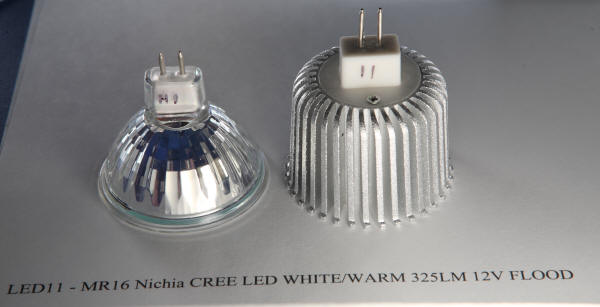 With a 93 degree 25% beam width, it was wider than the beam width of the Halogen flood lights. So I'm thinking this too could benefit from a lens that focuses the light a bit tighter, at which point it might very well give the Halogens some serious competition. Their ad specifies you can get various beam width lenses, but I wasn't willing to purchase a pile of them for the evaluation. Also, in their add the first four photos on the top row represent this bulb - the remaining photos do not! In my notes, I specified "I want the MR16-Q6DE Daylight White in 120 degree pattern. If this isn't the correct bulb, DO NOT SHIP IT - Contact me first." so I can only assume they sent me what they felt was 120 degree pattern. Since I can find no industry standard definition for beam width, it is entirely possible their definition is "If you can see light falling, it is in the beam." They list 15, 30, 60, 120, and 160 degree lenses. They were the only vendor in the batch that offered such options! I would choose this if it was the same cost as LED10 or LED12, but at $26/each and a larger form factor and slightly dimmer, I think it makes for a solid second place contender assuming the form factor fits in your fixture. Given its 0M EV and spread, I think with a lens change this could beat the 20W and probably equal the 35W Halogen bulbs. Tentative conclusion: The LED industry is close, but not there yet. Not for the bright warm 50W Halogen bulbs. But if you can live with cooler whiter light, you can get acceptable brightness. If you liked this or have questions, please shoot me an email and say hi! If you want, I'll keep you informed of any updates. I'm a real person, not some spam gathering email harvesting big corporate junk mail house. I'm playing with integrating Facebook's like button - if you liked this article and have a facebook account, please show some love and hit the button below. Thanks!
Send me an email to this address which I've setup to collect an interested people list: led at dascc dot com. Regards, David Soussan Testing methodology: I'm using a Polaris SPD100 light / flash meter for all light intensity measurements. While not calibrated to Lux or Lumens, it does provide a light brightness level in EV (Exposure Value) accurate enough to expose film or digital, and with some math comes close to the light intensity in Lumens. In other words, you can take all my measurements as accurate relative to each other and not necessarily calibrated to any given standard reference. In other words, if I say a Halogen bulb measured an EV=6.6 and a LED bulb measured EV=5.6, the LED is half the brightness of the Halogen and the equivalent brightness could be reached with two of the LED bulbs lighting the same area. EV is a logarithmic scale - so EV=3 is twice as bright as EV=2, EV=4 is twice as bright as EV=3, etc. So if one particular LED bulb reads EV=6 and a halogen bulb reads EV=8, the halogen bulb is 4 times brighter than the LED and conversely the LED is 1/4 the brightness of the halogen bulb. I have an area setup with a black ceiling and spread out a black cloth to eliminate reflections. All the measurements are taken with the light meter with the white dome cover on and pointing back at the light source, kept at a constant radius from the light source for measuring beam width to the half brightness and quarter brightness angles. There are some bulbs that call themselves spot, some called flood, but in reality I'm going to measure the diameter where you get half and quarter brightness. The closer those two numbers are, the quicker the light is falling away and the harder the light's edge is. farther apart means the falloff is softer and thus a wider angle bulb. Temperature measurements were taken with a Fluke 80TK Thermocouple Module connected to a BK Precision / Dynascan corporation 2818 True RMS Multimeter to take a voltage reading off the thermocouple. Current measurements were taken by running the lamp through a pair of 0.1 Ohm 25W 1% precision resistors connected in parallel, reading the voltage drop across the 0.05 Ohm combined resistance and using Ohm's law I=V/R to measure the current flow, then P=VI to calculate the power consumed for each bulb. I built this device in 1990 for measuring current consumption by a PC on each leg of the power supply. It proved itself valuable again! 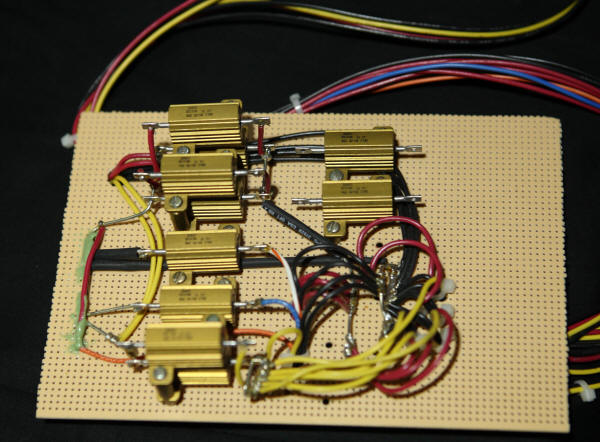 Light temperature has been approximated by taking a digital photo of a white piece of paper with each bulb and looking at the R G B values, looking them up in a table referenced here and expanded. I calculated the R:G, R:B, G:B ratios from that table, then calculated the same ratios for each measured white paper photo and averaged the color temperatures biasing towards whichever value (R, G, or B) was changing faster. Sorry, but I don't have a colorimeter to use nor was I willing to buy one for this test. In other words, "Take my measured color temperature value as a best educated guess" versus the current measurement which I'd bet my paycheck on its accuracy. I didn't buy multiple samples of each bulb and thus can't give data for
how consistent each vendor is with their products. Not enough time for
longevity data to be gathered, but this could be a long term item. This
study wasn't funded by any of the vendors included here - I'm currently
funding the entire project out of my company's capital budget. If you represent a manufacturer and would like your product included
in the mix, you can contact me to make the appropriate arrangements. Things I'd like to add for a better comparison: Incandescent bulbs:
40W
60W
75W
100W 150W Endnotes: [1] Reference data for the common bulbs and their light output in Lumens taken from The table referenced in Wikipedia (look down about 2/3 of the way), http://www.efi.org/factoids/lumens.html and a package for GE's part #90419, "Crystal Clear 40" 110V AC bulb purchased from Wal-Mart and the package says it produces 480 lumens. Specs for the Philips MR16 Halogen bulbs from page 13 of the specs that can be found on the Philips web site. |
|||||||||||||||||||||||||||||||||||||||||||||||||||||||||||||||||||||||||||||||||||||||||||||||||||||||||||||||||||||||||||||||||||||||||||||||||||||||||||||||||||||||||||||||||||||||||||||||||||||||||||||||||||||||||||||||||||||||||||||||||||||||||||||||||||||||||||||||||||||||||||||||||||||||||||||||||||||||||||||||||||||||||||||||||||||||||||||||||||||||||||||||||||||||||||||||||||||||||||||||||||||||||||||||||||||||||||||||||||||||||||||||||||||||||||||||||||||||||||||||||||||||||||||||||||||||||||||||||||||||||||||
